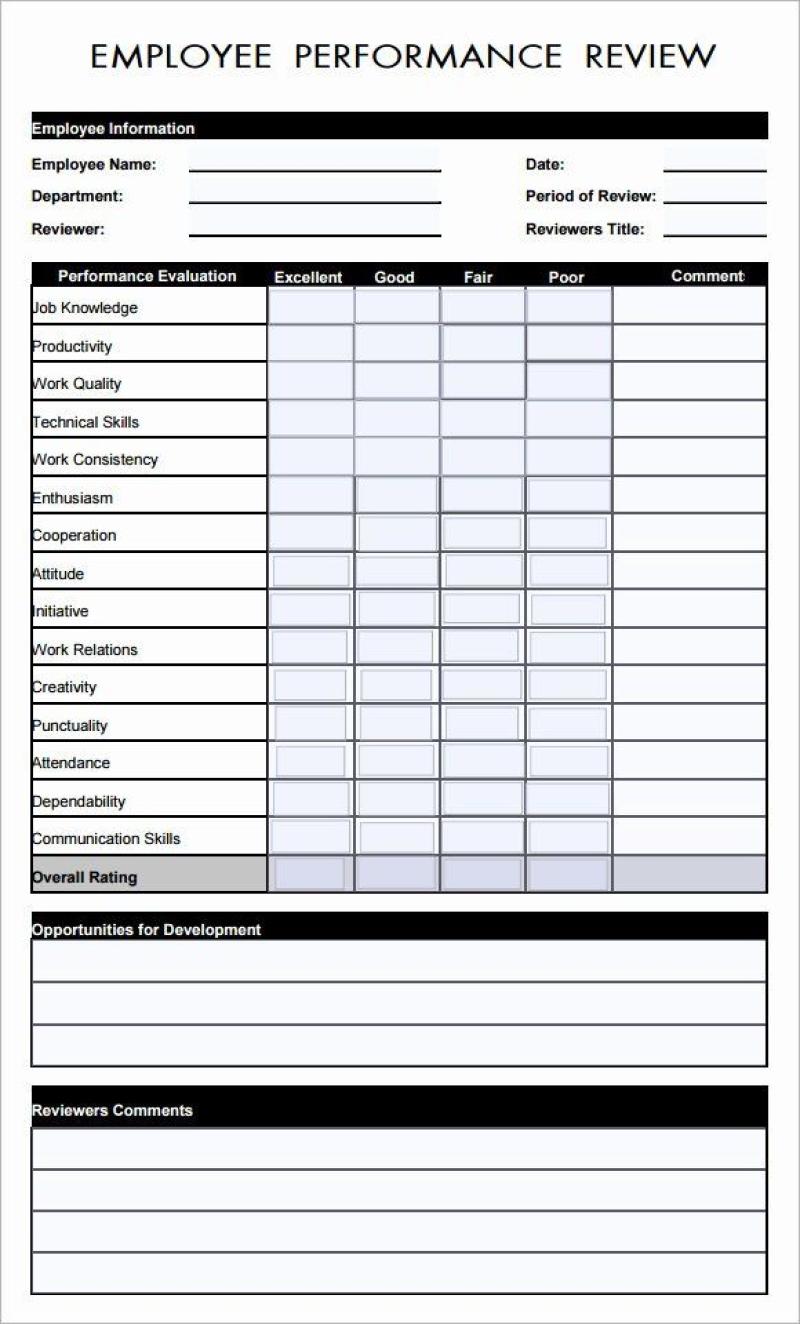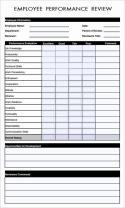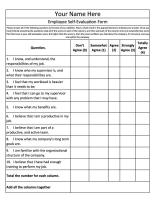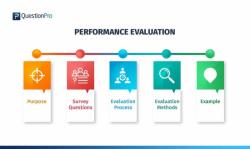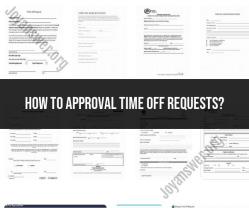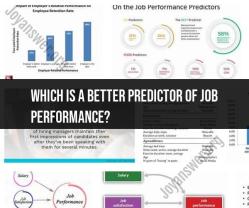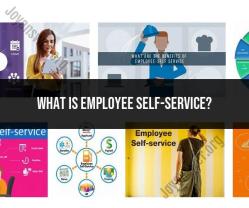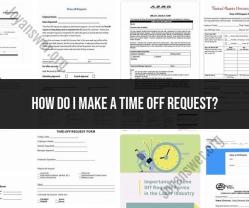How to address attendance on an employee evaluation?
Addressing attendance in employee evaluations requires a balanced and constructive approach. Here are some best practices to effectively address attendance in performance evaluations:
Use Clear and Objective Criteria:
- Establish clear attendance criteria and expectations, such as the number of allowable absences, punctuality standards, and any specific policies related to attendance. Ensure that these criteria are communicated to employees in advance.
Document Attendance Records:
- Maintain accurate attendance records to provide concrete evidence during evaluations. Document instances of attendance issues, such as tardiness or unexcused absences, to support your assessment.
Link Attendance to Performance:
- Tie attendance to job performance where applicable. Explain how attendance impacts an employee's ability to meet job responsibilities, collaborate with colleagues, and contribute to the overall success of the team.
Provide Constructive Feedback:
- When addressing attendance issues, focus on providing constructive feedback rather than being punitive. Clearly communicate the impact of attendance on the employee's performance and offer suggestions for improvement.
Be Specific:
- Be specific about the attendance concerns. Instead of making general statements, provide examples of specific instances where attendance has been an issue. This helps employees understand the context and areas for improvement.
Encourage Open Communication:
- Create a space for open communication. Allow employees to share any challenges they may be facing that affect their attendance. This can help you understand the root causes and work together on solutions.
Set Realistic Expectations:
- Ensure that attendance expectations are realistic and considerate of individual circumstances. Be mindful of factors such as health issues, family emergencies, and other situations that may impact attendance.
Acknowledge Positive Attendance:
- Don't solely focus on negative aspects. Acknowledge and appreciate employees who consistently meet or exceed attendance expectations. Positive reinforcement can motivate employees to maintain good attendance.
Collaborative Goal Setting:
- Work collaboratively with the employee to set attendance improvement goals. This involves discussing specific actions and timelines for improvement. Ensure that the goals are realistic and achievable.
Provide Resources and Support:
- If attendance issues are linked to personal or health challenges, consider providing resources or support services, such as Employee Assistance Programs (EAPs) or flexible work arrangements.
Follow Company Policies:
- Adhere to company policies and procedures when addressing attendance issues. Consistency in applying policies helps maintain fairness and transparency.
Offer Training if Necessary:
- If attendance issues are related to time management or organizational skills, consider offering training or resources to help employees improve these skills.
Document Improvement or Lack Thereof:
- Document any improvement or lack thereof in attendance after the initial evaluation. This documentation will be valuable for future assessments and discussions.
Remember that addressing attendance in employee evaluations is not just about pointing out deficiencies but also about fostering a positive and supportive work environment where employees are encouraged to excel and improve. Open communication, clear expectations, and a collaborative approach contribute to a more effective evaluation process.
Employee evaluation concern: How to address attendance on an employee evaluation?
Addressing attendance issues in employee evaluations is a crucial aspect of performance management. It allows managers to provide constructive feedback, identify underlying causes, and collaborate with employees to improve their attendance patterns. Here's a step-by-step approach to addressing attendance concerns in employee evaluations:
Gather accurate attendance data: Before addressing attendance issues, review the employee's attendance records to gain a comprehensive understanding of their attendance patterns. This includes documenting instances of absenteeism, tardiness, and any patterns or trends in their attendance behavior.
Conduct a one-on-one meeting: Schedule a private meeting with the employee to discuss their attendance concerns. Approach the conversation with empathy and understanding, acknowledging the impact their attendance has on their work, team dynamics, and overall performance.
Identify underlying causes: During the meeting, explore the reasons behind the employee's attendance issues. Listen attentively to their explanations and avoid making assumptions or jumping to conclusions. There may be underlying personal, health, or work-related factors contributing to their attendance patterns.
Establish clear expectations: Clearly communicate the company's attendance policies and expectations. Discuss the importance of consistent attendance for meeting deadlines, maintaining productivity, and upholding professional standards.
Develop a plan for improvement: Collaborate with the employee to develop a realistic and actionable plan for improving their attendance. This may involve setting attendance goals, identifying resources or support systems, and addressing any workplace factors that may be contributing to attendance issues.
Monitor progress and provide ongoing support: Regularly check in with the employee to monitor their progress and provide ongoing support. Acknowledge their efforts and celebrate improvements along the way. If attendance issues persist, consider additional interventions, such as formal counseling or disciplinary action.
Strategies for managers and employees in addressing attendance-related feedback in performance evaluations
Both managers and employees play a crucial role in addressing attendance-related feedback in performance evaluations. Here are some strategies for each party:
Manager's strategies:
- Prepare for the discussion: Gather relevant attendance data, review company policies, and formulate clear feedback points.
- Approach the conversation with empathy: Acknowledge the employee's situation and focus on finding solutions.
- Listen actively and avoid judgment: Allow the employee to explain their perspective and understand their challenges.
- Set clear expectations and goals: Outline attendance expectations and work together on a plan for improvement.
- Provide ongoing support and monitor progress: Regularly check in with the employee and offer support as needed.
Employee's strategies:
- Be open to feedback: Listen attentively to the manager's concerns and show a willingness to improve.
- Explain your situation: Provide honest and transparent explanations for attendance issues.
- Collaborate on a plan: Work with your manager to develop a realistic and actionable plan for improvement.
- Take responsibility and make changes: Acknowledge the impact of your attendance and make efforts to improve your patterns.
- Seek support if needed: Don't hesitate to seek help from HR, counseling services, or support groups if necessary.
Tips for fostering positive attendance habits and addressing concerns constructively
Here are some tips for fostering positive attendance habits and addressing attendance concerns constructively:
- Promote a healthy work-life balance: Encourage employees to take breaks, maintain a healthy lifestyle, and seek support when needed.
- Recognize and reward good attendance: Acknowledge and appreciate employees who consistently demonstrate excellent attendance.
- Address attendance issues early: Don't wait for attendance problems to escalate before intervening. Address concerns promptly and constructively.
- Maintain open communication: Encourage open and honest communication between managers and employees regarding attendance matters.
- Create a supportive work environment: Foster a positive and supportive work environment that promotes employee well-being and encourages consistent attendance.
